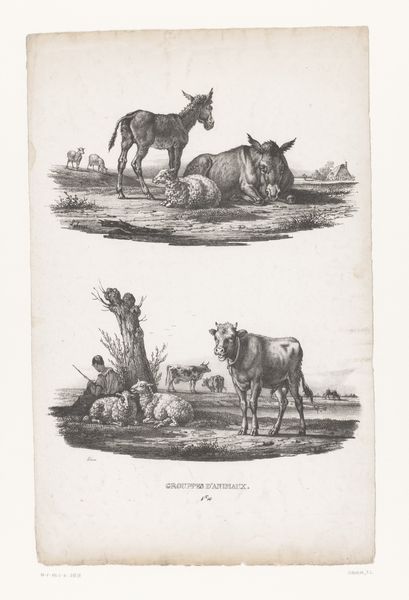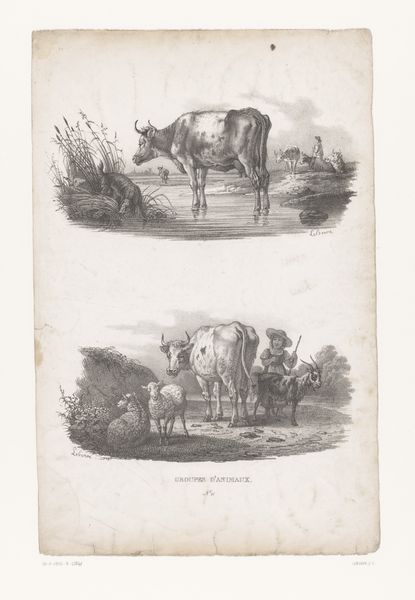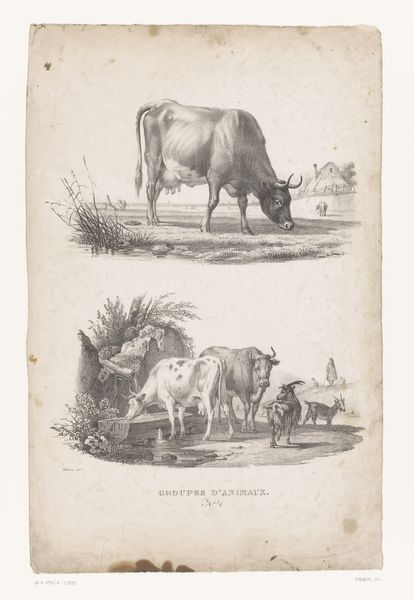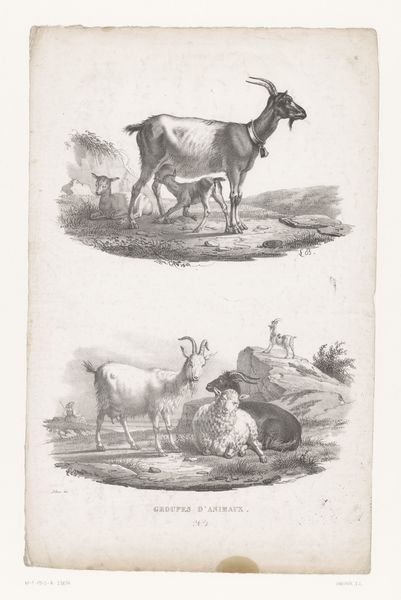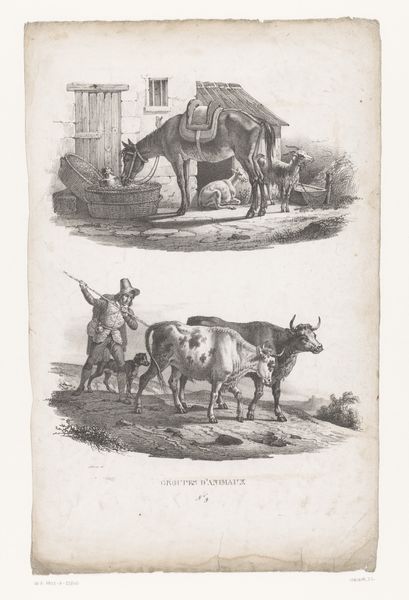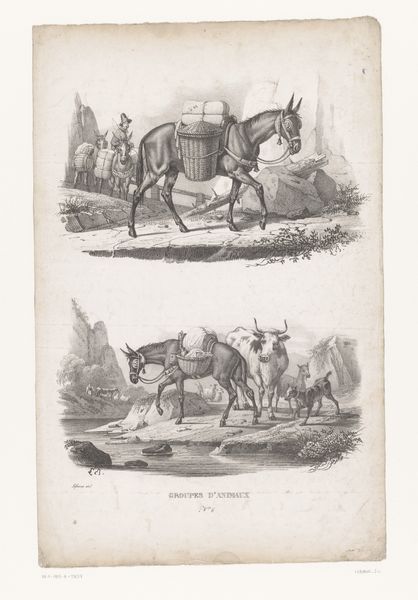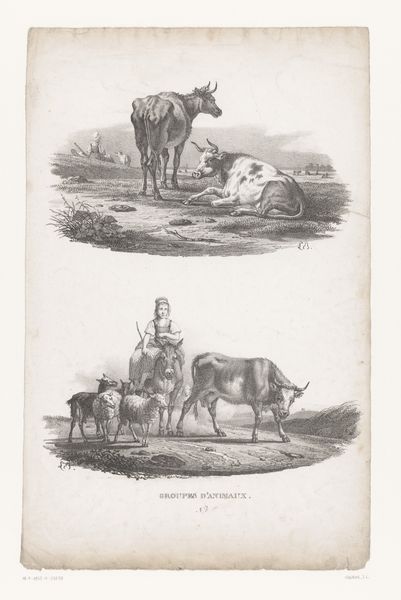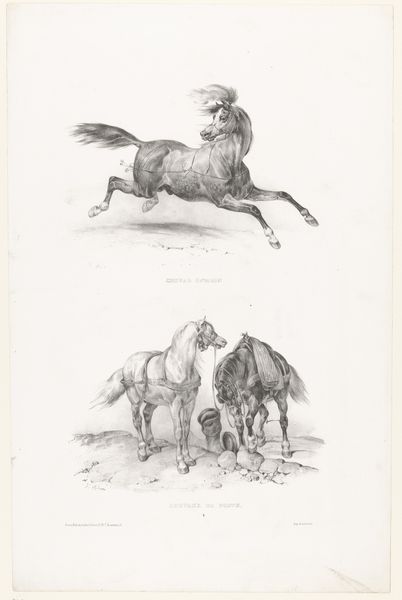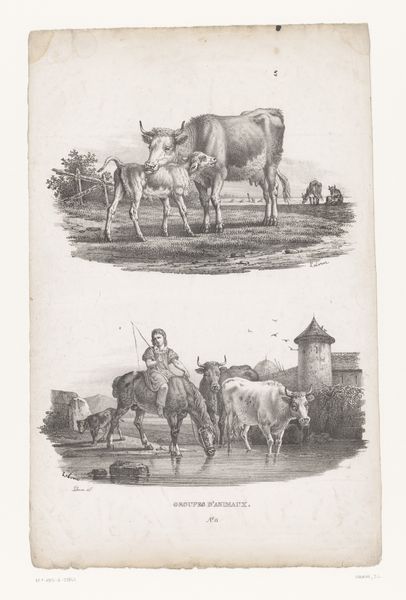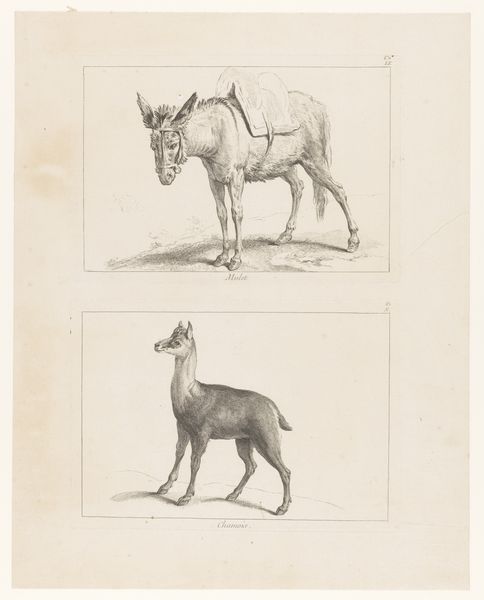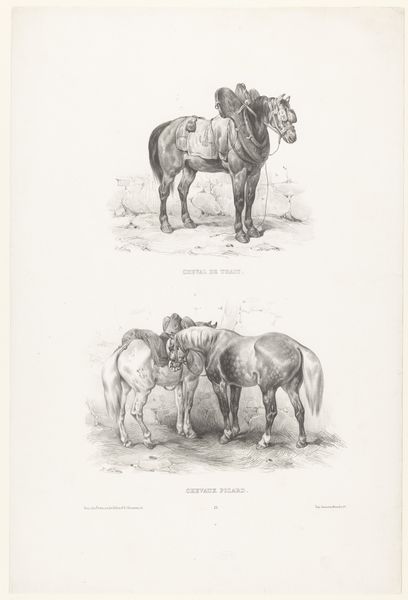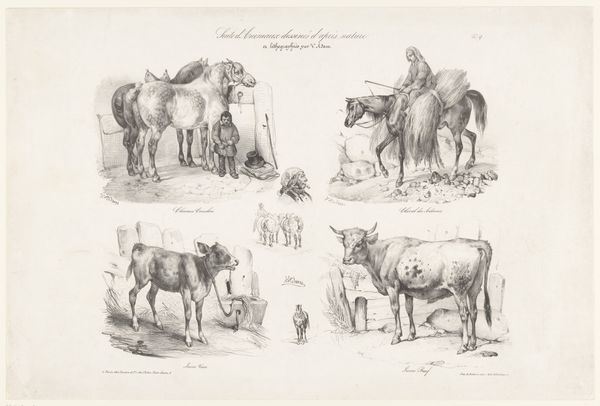
drawing, print, pencil
#
portrait
#
drawing
# print
#
pencil sketch
#
landscape
#
pencil
Dimensions: height 466 mm, width 298 mm
Copyright: Rijks Museum: Open Domain
This print, "Ezel en herderin zadelt ezel" or "Donkey and shepherdess saddling a donkey" was made by Joseph Louis Leborne. Prints such as these were popular in 19th-century Europe, serving educational and decorative functions for a burgeoning middle class with a hunger for knowledge and culture. It depicts an animal, the donkey, used for labour, transport, and agriculture, being saddled by a herder. What does the donkey say about the social structure of the time? Perhaps the image idealises rural life and a harmonious relationship between humans and animals. Leborne was working at a time when the old certainties of aristocratic patronage were crumbling. The rise of academies of art brought new rules about style and subject matter. His works were informed by the visual codes and cultural references of his time. His interest in the natural world, as revealed in this print, fits neatly into the broader scientific and intellectual currents of the 19th century. Art historical research helps us understand how social, economic, and institutional contexts shape the production and reception of art.
Comments
No comments
Be the first to comment and join the conversation on the ultimate creative platform.
